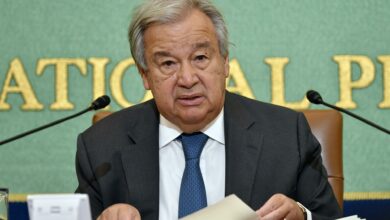US economy grew by 2.1 percent in 2022

Washington, Jan 26 (EFE).- The US economy grew by 2.1 percent in 2022, according to early calculations of the country’s annual gross domestic product (GDP) published Thursday by the US Bureau of Economic Analysis (OEA).
According to BEA figures, the US GDP in the fourth quarter of 2022 increased by 0.7 percent over the previous quarter, implying an annual increase of 2.9 percent.
This 0.7 percent rise creates, the BEA said, within the framework of moderate inflation, lower unemployment, continued uncertainty in supply chains and rising interest rates.
Interquarterly growth slowed slightly in the fourth quarter – it was just 0.1 percent higher than that of the third quarter – a situation attributed to the fall in exports and in the rhythm of fixed non-residential investment, state and local government spending and consumer spending, the BEA said.
These declines were partially offset by a resurgence in private investment in inventories, an acceleration in federal government spending and a small decline in fixed residential investment. Imports, meanwhile, decreased less in the fourth quarter than in the previous quarter.
The 4Q figures are still incomplete, the BEA said, and this early estimate could change with the definitive figure not becoming known until the end of March.
Although growing at a much slower rate than in 2021 – when growth hit 5.9 percent – the US closed out 2022 with 2.1 percent annual GDP growth, with consumers and analysts having put fears of a recession behind them after the year’s first two quarters showed an economic contraction.
Increases in consumer spending, exports and investment in private inventories as well as fixed non-residential investment were compensated for in part by declines in fixed residential investment and federal government spending.
The US government welcomed the figures, Assistant Secretary of Commerce for Economic Development Alejandra Castillo told EFE.
This has been the “fastest economic recovery we’ve seen since 1953,” Castillo said, referring to the economic deceleration the US experienced in the second quarter of 1953 and which lasted only until the first quarter of 1954.
Castillo also emphasized the measures the Joe Biden administration has taken to strengthen the economy and prepare it for the future.
The annual growth figure published on Thursday is above the estimates of the International Monetary Fund, which in its latest report last October forecast that the US would grow by 1.6 percent in 2022. For 2023, the entity says that US economic growth will be 1 percent, but that figure will be updated next week.
Estimates of slower growth in 2023 come amid a complex global economic scenario resulting from the war in Ukraine and also as economists are seeing the consequences of the interest rate hikes undertaken in recent months by the US Federal Reserve to control inflation.
Last December, the Fed raised interest rates, the seventh such hike since March. Although the latest increase was “only” 0.50 percent compared to the four previous 0.75 percent hikes, the Fed made clear that it will not stop increasing interest rates for the moment.
The next increase will be decided upon by the members of the Fed’s Open Market Committee at their next meeting, which will take place on Jan. 31-Feb. 1.
US interannual inflation continued to fall in December for the sixth consecutive month and came in at 6.5 percent, 0.6 percent below the November rate, while the unemployment rate declined 0.2 percent in December and closed out 2022 at 3.5 percent.
EFE pem-bpm/eat/bp





